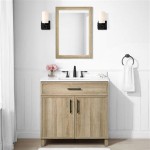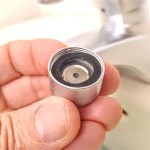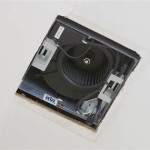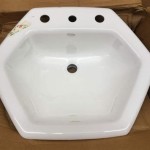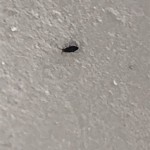How to Remove a Bathroom Vanity Top That is Glued Down
Removing a bathroom vanity top that has been glued down can present a significant challenge. Understanding the proper techniques and employing the correct tools are essential to minimize damage to the vanity cabinet and surrounding surfaces. This article provides a comprehensive guide to removing a glued-down vanity top effectively and safely.
Various factors contribute to the difficulty of this task. The type of adhesive used, the material of the vanity top and cabinet, and the age of the installation all play a role. Adhesives range from construction adhesives to silicone caulks, each requiring different strategies for removal. Furthermore, the material's fragility, such as natural stone, requires a delicate approach to avoid cracking or chipping. Pre-planning, careful execution, and patience are vital for successful removal.
Preparation and Safety Precautions
Before commencing the removal process, thorough preparation is paramount. This step involves gathering necessary tools and materials, protecting the surrounding area, and understanding the potential risks involved. Ignoring these preliminary steps can lead to damage, injury, or a more complex removal process.
First, assemble the required tools. Essential items include: a utility knife with new blades, a putty knife or scraper (preferably with a flexible blade), a heat gun or hairdryer, a pry bar (use sparingly and with caution), safety glasses, gloves, a face mask, and cleaning supplies (such as mineral spirits or adhesive remover). A small hammer can also be useful for tapping the putty knife. Having these tools readily available streamlines the process and reduces the likelihood of improvisation, which can often lead to mistakes.
Protect the surrounding area before beginning. Lay down drop cloths or plastic sheeting on the floor and cover any nearby fixtures, such as the toilet or shower. This prevents debris, adhesive residue, and potential scratches from affecting these surfaces. Secure the coverings with painter's tape to prevent them from shifting during the removal process.
Safety considerations are critical. Always wear safety glasses to protect the eyes from flying debris and adhesive splatters. Gloves are necessary to protect the hands from sharp edges, adhesive chemicals, and potential irritants. A face mask is advisable, especially when using chemical solvents or if there is a risk of dust or mold spores being released during the removal process. Proper ventilation is also important, so open windows or use a fan to circulate air in the bathroom.
Before starting, inspect the vanity top and cabinet. Identify the areas where the adhesive is most concentrated. Look for any exposed seams or gaps where the putty knife can be inserted. Understanding the adhesive's distribution helps in planning the removal strategy.
Breaking the Adhesive Bond
The primary objective is to break the adhesive bond between the vanity top and the cabinet. This requires a systematic approach, employing a combination of cutting, heating, and prying (when necessary). Patience is key, as forcing the top can cause significant damage.
Begin by using the utility knife to cut through any caulk or sealant along the edges of the vanity top where it meets the wall or backsplash. Run the knife along the seam multiple times, ensuring that you sever the bond completely. This step is crucial for preventing the wall from being damaged when lifting the top. Replace the blade frequently to maintain sharpness and efficiency. A dull blade can tear the caulk instead of cutting it cleanly.
Next, use the utility knife to score the adhesive along the top edge of the vanity cabinet where it meets the underside of the vanity top. Again, run the knife along the seam repeatedly, attempting to penetrate as deeply as possible. This weakens the adhesive bond and creates a channel for the putty knife. Be extremely careful when using the utility knife to avoid cutting into the cabinet or vanity top material. Apply steady, controlled pressure rather than excessive force.
Employ a heat gun or hairdryer to soften the adhesive. Apply heat to the edges and seams of the vanity top, focusing on areas where the adhesive appears to be strongest. Move the heat gun back and forth to avoid overheating any one spot, which could damage the vanity top material. The heat softens the adhesive, making it easier to break the bond. Check the temperature of the vanity top frequently to avoid overheating it.
Insert the putty knife into the scored seams. Gently tap the handle of the putty knife with a small hammer to drive the blade further into the adhesive. Work along the edges, gradually separating the vanity top from the cabinet. Apply slow, steady pressure, avoiding sudden jerks or excessive force. If the putty knife meets significant resistance, apply more heat and try again. Consider using multiple putty knives of varying sizes and flexibility to address different areas of the adhesive bond.
If the putty knife alone is insufficient, a pry bar can be used, but with extreme caution. Protect the cabinet by placing a piece of wood between the pry bar and the cabinet surface. Apply gentle, controlled pressure to lift the vanity top. Avoid excessive force, as this can easily damage the cabinet or the vanity top. The pry bar should be used as a last resort, and only when other methods have failed.
Repeat the process of heating, scoring, and prying as needed until the vanity top is free from the cabinet. Work slowly and methodically, taking breaks as necessary to avoid fatigue. The goal is to separate the vanity top with minimal damage to either the top or the cabinet.
Dealing with Stubborn Adhesive and Final Removal
Even with careful execution, some adhesive may remain stubbornly bonded to either the vanity top or the cabinet. These residual adhesives require specific treatments to ensure a clean surface for future installations or repairs.
For remaining adhesive on the cabinet, continue using the putty knife to scrape away as much of the material as possible. Apply heat to soften the adhesive if necessary. Mineral spirits or a specialized adhesive remover can also be used to dissolve the adhesive. Apply the solvent according to the manufacturer's instructions, allowing it to soak into the adhesive for the recommended time. Then, scrape away the softened adhesive with the putty knife. Repeat the process as needed. Test the solvent in an inconspicuous area first to ensure it does not damage the cabinet finish.
For remaining adhesive on the vanity top (if you intend to reuse it), the same process can be followed, but with even greater care. The vanity top surface is often more delicate than the cabinet, so avoid using excessive force or abrasive materials. Choose a solvent that is compatible with the vanity top material. Some solvents can damage or discolor certain surfaces, such as natural stone or cultured marble. Always test in an inconspicuous area first.
Once the adhesive is removed, clean the surfaces thoroughly with a damp cloth and mild detergent. This removes any remaining solvent residue and prepares the surfaces for further work. Inspect the cabinet for any damage, such as scratches or chips. Repair any damage as needed before installing a new vanity top. Small scratches can often be repaired with touch-up paint, while larger damage may require wood filler or other repair materials.
With the adhesive removed and the surfaces cleaned and repaired, the area is ready for the installation of a new vanity top or other renovations. Taking the time to properly remove the old vanity top ensures a smooth and successful transition to the next phase of the project. Dispose of the old vanity top and any waste materials properly, following local regulations for disposal of construction debris. Consider recycling any materials that can be recycled, such as metal or wood.

5 Easy Steps On How To Remove A Bathroom Vanity Diy Guide

How To Remove A Bathroom Vanity Budget Dumpster
:max_bytes(150000):strip_icc()/7_remove-vanity-top-56a4a26d3df78cf772835b2d.jpg?strip=all)
How To Remove A Bathroom Vanity Cabinet

How To Diy Remove Replace A Bathroom Vanity Countertop What Not Do Yep I Broke It

How To Remove A Bathroom Vanity And Top

How To Remove A Glued Undermount Bathroom Sink From Marble Hunker

How To Remove And Replace A Bathroom Vanity Top Hunker

How To Remove A Vanity Top

The Glue Failed On My Bathroom Sink Hometalk

How To Remove A Bathroom Vanity And Top
Related Posts
